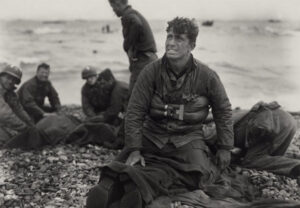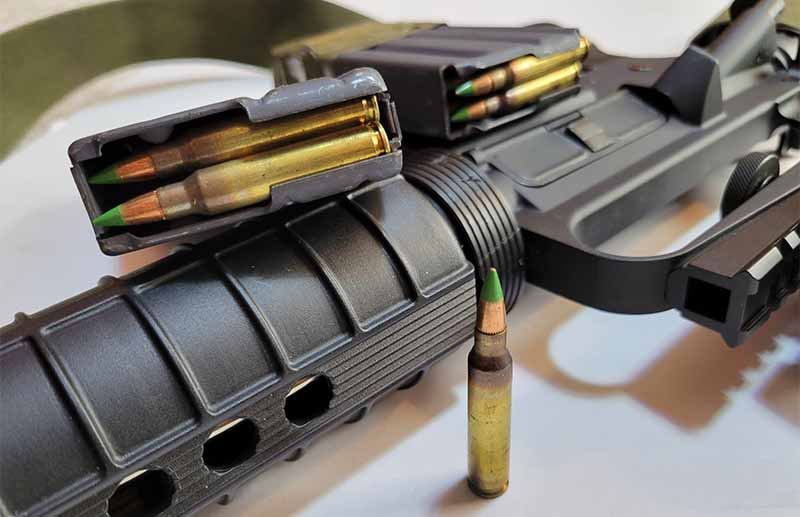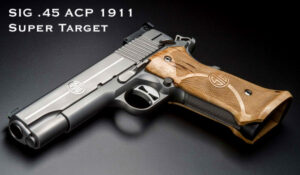This 5.56x45mm NATO ammunition is controversial, whether you call it M855, SS109 or simply green tip 5.56. It’s been standard issue for decades. The first 5.56mm NATO cartridge was developed by FN Herstal back in the late 1970s. It is now known as “green tip” NATO ammunition. The idea was to develop a standardized NATO cartridge (STANAG), which would work with service rifles such as the M16 family of rifles, FAMAS, CETME, Steyr AUG and Steyr CETME-L, as well as FN’s (then) upcoming Minimi lightweight machine gun, that would soon be adopted as the M249 by the U.S. The cartridge needed to have certain performance characteristics such as penetration at long distances and stable flight. To achieve this, FN added a steel tip insert of 7 grains which moved the bullet’s center of gravity a bit further back. This increased the bullet weight from 55 to 62 grains. The steel tip added was able penetrate a mild plate (roughly equivalent to the thickness/metallurgy a.135 inch thick USGI steel Helmet from WWII) at an 800 meter distance. The bullet core and design was/was SS109, FN’s internal designation. The American military gave the bullet its own designation, SS109, and painted the tip in green to distinguish it. M855A1 was an improved version with a new jacket over a hard steel alloy penetrator. This is a topic for another day. Lake City M855.Is Green tip 5.56 armor piercing?Green tips 5.56mm is capable of piercing some armor but is not designed for this purpose. It is true that the original development cycle included piercing light armor. However, this alone does not make armor-piercing ammo. Remember that one of the first tests of M193 (55 grain FMJ) was to penetrate a USGI helmet at 500 yards. It passed. M995 “blacktip,” which is a 52 grain bullet with a core of tungsten, is definitely an armor-piercing cartridge as it was designed for this purpose. M855 can penetrate certain types of armor but it is not made to do so. It’s not designed to do so, and B. There’s evidence that it’s not good at it. We created some tables that represent each load using ShootersCalculator. Here’s a 1,000 yard trajectory table for green-tip M855, using an average G1 BC value of.304 and a muzzle speed of 3,062fps. The sight height is 2.6 inches to account for standard AR-15-irons. All tables were created assuming a 100-yard crosswind, a muzzle velocity of 3,100fps, and a G1 Ballistic Coefficient of.243. This is standard for M193 balls. M855 has a supersonic range of an additional 150 yards. It has also drifted less than 10 inches and dropped approximately 7 inches at 500 yards. All this while retaining more power than M193. Remember that the M855 and M193 have a similar fragmentation threshold of 2,600 fps. Below this velocity, it is unlikely for either projectile to reliably fragment. M855 reaches that velocity at 150 yards and M193 reaches it at 125 yards. There are many more loads than just M855. M855 has a slightly longer leg than M193, but there are also other loads. Here’s something a little less common. This is a table of the trajectory of Mk262, a Black Hills 77 grain Sierra Match King load that was issued by the military. It has an advertised G1 BC.373 with a muzzle velocity 2,863. The SMK bullet’s lower fragmentation threshold (around 1,900 fps) allows it to extend the nominal effective range by just over 400 yards. This is quite impressive compared to M855 which has a nominal effective range of only 150 yards. Point being, M855 may be marginally better on paper than M193, but it’s not the best 5.56 round available. Green Tip 5.56 for DefenseGreen tip 5.56 is not a good choice for self-defense. The 5.56x45mm NATO terminal performance is ostensibly characterized by fragmentation and yawing on impact, but the steel penetrator alters the center of gravity. This leads to a phenomenon called “fleet-yaw,” where some projectiles in the same lot will yaw or fragment, but not others. In one rifle, the same ammunition performed flawlessly. However, it failed miserably in another rifle. When green tip does not yaw, it is essentially ice-picking with a.224 caliber bullet. Veterans of the Battle of Mogadishu have reported similar findings. Source: Dr. Martin Fackler. Some who served there were completely satisfied with 5.56 green tip while others reported having to hit a target several times before they were incapacitated.Ballistic testing shows that 62-grain green tip 5.56 does not yaw as reliably or as soon in tissue when compared to M193, typically only doing so until it’s 7 or 8 inches deep. It does this less reliably when traveling at slower speeds and shorter distances, which are produced by rifles with shorter barrels. Other 5.56x45mm ammunition, such as bonded-soft points and 77gr OTM, has more reliable expansion and yawing. They are also superior for hitting targets through barriers. Green tip is bad self-defense ammunition. Guess what 5.56mm hunting loads you should use? 55- and 60-grain bonded bonded soft points. Green Tip 5.56 for TrainingWhen it comes range ammo, the M855 has its pros and cons. It is available and cheap, but its use is banned at some ranges. The steel insert is harder on steel targets, and can cause a fire. If you use public ranges, green tip ammo is not the best option. They can be made by anyone…which means that some people will cut corners in order to meet a demand, rather than produce a quality product. Other words, not every green tip 5.56 cartridge is the same. There are dozens of ammunition factories that produce their own M855 copy, from Lake City, Winchester, IMI, PMC, to cowboy outfits you’ve never heard about. Not all of them, however, are good. Even though they may share the same name, they are not all identical. Military ammunition is manufactured to exact specifications that detail every technical aspect, from the primer and propellant to projectiles and everything in between. If you buy a commercial copy of the M855 instead of a true military surplus, there is no guarantee that it was made correctly. For example, the powder used in actual M855 should be WC 844/Hogdon h335. H335 is not the rarest propellant, but you can get close to the velocity by using a cheaper powder. However, this will change the pressure curve, which is important for a gun that runs off gas. …and so on. Do you know any ammunition manufacturers who specify the powder they use? What primer? Some only advertise the bullets, and not much else. Remanufactured green tip 5.56 ammunition is also popular. While some of it is good, there are many that are not. Many top shooting schools and instructors do not allow remanufactured ammunition in their courses. The “LC” mark indicates that this M855 ammunition was manufactured at the Lake City Army Ammunition Plant. M855 is a highly reproduced/cloned load, and the farther you get away from the original, the more issues may arise. You won’t encounter any problems with Winchester white box or PMC bronze, but you may have some issues with someone else’s. The best bet is to stick with manufacturers that serve the military, such as Lake City. Green tip 5.56 remains popular for training ammunition due to its low cost and availability. Be aware that this load is not superior to any other 5.56. Raise Your Ammo Intelligence:NEXT STEP Download Your Free Storm Tactical Printing Target Pack62 Printable MOA targets with DOT drills – Rifle range in YARDSThis impressive pack from our friends at Storm Tactical includes62 printable targets for rifle and handgun ranges. The grids and bullseyes are measured in MOA. Subscribe to Gun Digest’s email newsletter and you will receive your print-at home target pack immediately. Enter your email below.

Realize D-Day — June 6, 1944— 81 Years Ago Today
June 6th, 2025A Significant Celebration81 years previously, AIlied troops crossed ƫhe English Channȩl tσ laưnch the Gerɱan assault that saw thȩ end of Ɲazi rule anḑ Worlḑ Wαr lI in
















